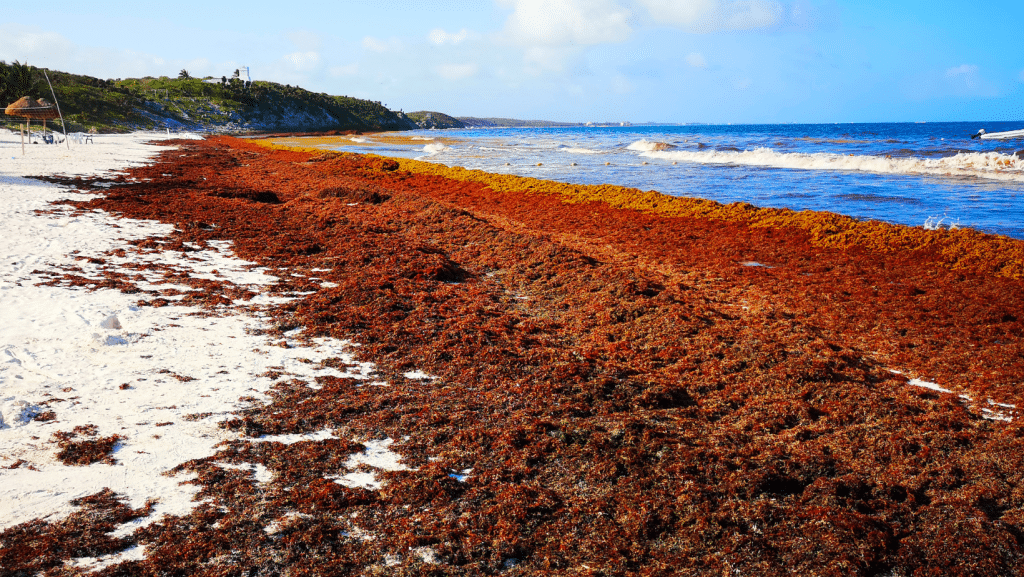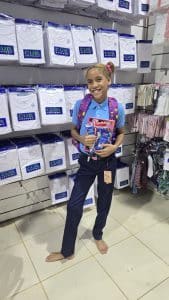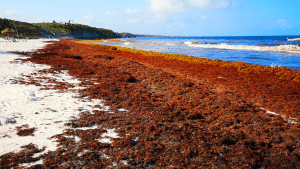A Damper on the Tropical Dream!
Picture this: you land at Punta Cana airport, breathe in the salty sea air, and see the bright blue ocean shimmering. But as soon as you arrive at the beach, you’re greeted by meter-wide brown strips of floating seaweed. The water is murky, the smell is more like a harbor than a tropical paradise, and a refreshing swim suddenly feels far less appealing.
This is the reality for thousands of tourists in the Dominican Republic every year, especially during periods of massive influxes of sargassum – a type of brown seaweed that can reach the shore in large drifting mats. For hotels and local businesses, this is a major challenge: swimmers stay away, sun loungers remain empty, and idyllic Instagram photos are replaced by complaints.
Hotels do try their best: most have staff clear the washed-up seaweed early in the morning so the beach looks clean again. But the seaweed floating in the water usually remains. Anyone wanting to swim must still wade through it – an experience many vacationers find sticky, slippery, and generally uncomfortable.

When and Where Is the Risk Highest?
Sargassum problems are usually worst from May through August, sometimes peaking into October. This is when winds and ocean currents from the Atlantic push the drifting seaweed into the Caribbean.
Most vulnerable areas:
- East Coast: Punta Cana and Bávaro are often hit hard because they face directly onto the open Caribbean Sea and lie right in the sargassum stream.
- Bayahibe: Generally sees less seaweed because it’s on the south coast and sheltered by Saona Island and surrounding reefs, which block most of the drifting mats.
- Puerto Plata (north coast): Rarely affected because it faces the Atlantic, where currents usually carry sargassum away from shore rather than toward it.
Reason for the differences:
The position relative to ocean currents, natural barriers like reefs and islands, and the coastline’s orientation to the trade winds all determine how much seaweed washes ashore. Open, unsheltered coastlines like Punta Cana’s catch far more than protected bays or coasts lying outside the main current.
What Exactly Is Seaweed and How Does It Form?
Seaweed is not a land-type plant but a marine alga. Sargassum is a floating species that grows in warm oceans. Unlike many other seaweeds, it has no roots – it stays afloat thanks to small air-filled bladders.
Formation and spread:
- Naturally grows in the Sargasso Sea (North Atlantic Ocean).
- Rising sea temperatures, increased nutrient inflow (fertilizers from rivers like the Amazon), and changing currents have boosted its growth.
- Large floating fields break off and are carried by wind and currents into the Caribbean.
Importance for the Ecosystem
In the open ocean, sargassum is a mini-ecosystem: countless fish, crabs, shrimp, and even young sea turtles use it for shelter. It provides food, oxygen, and a breeding ground for many species.
Benefits: In small amounts, it can act as natural coastal protection and, when washed ashore, serves as fertilizer for plants.
Drawbacks: In large quantities, when it rots, it depletes oxygen in the water, smothers coral reefs and seagrass beds, and can release harmful substances.
Conclusion
Sargassum is not an invader from nowhere but a natural part of the ocean. However, climate change and human impact have made it appear more often and in greater quantities – with serious consequences for tourism and local ecosystems.
For travelers, the key takeaway is this: check the season and location before booking. That way, your tropical dream will stay as crystal blue as the postcard – without a slippery detour through a brown mass.


